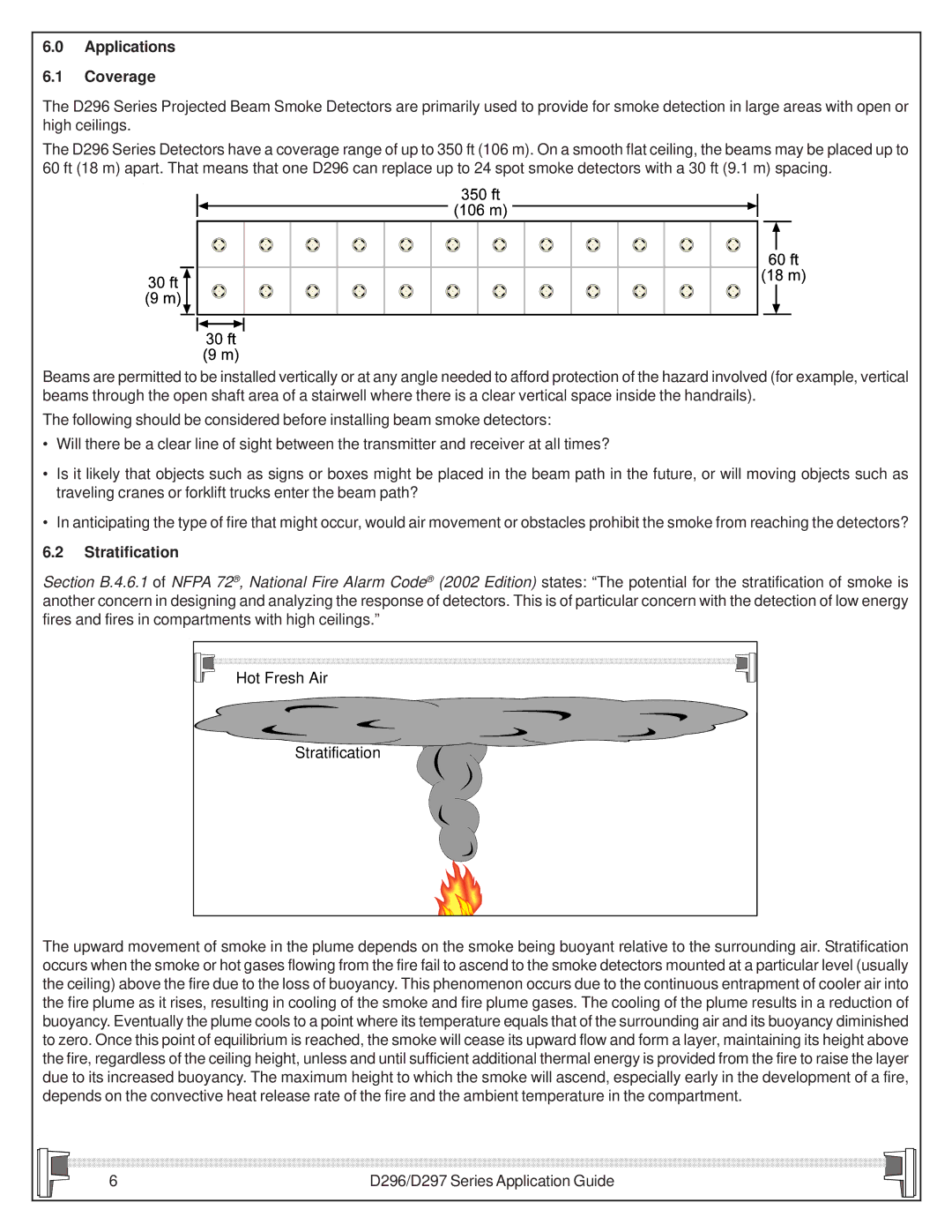
6.0Applications
6.1Coverage
The D296 Series Projected Beam Smoke Detectors are primarily used to provide for smoke detection in large areas with open or high ceilings.
The D296 Series Detectors have a coverage range of up to 350 ft (106 m). On a smooth flat ceiling, the beams may be placed up to 60 ft (18 m) apart. That means that one D296 can replace up to 24 spot smoke detectors with a 30 ft (9.1 m) spacing.
Beams are permitted to be installed vertically or at any angle needed to afford protection of the hazard involved (for example, vertical beams through the open shaft area of a stairwell where there is a clear vertical space inside the handrails).
The following should be considered before installing beam smoke detectors:
•Will there be a clear line of sight between the transmitter and receiver at all times?
•Is it likely that objects such as signs or boxes might be placed in the beam path in the future, or will moving objects such as traveling cranes or forklift trucks enter the beam path?
•In anticipating the type of fire that might occur, would air movement or obstacles prohibit the smoke from reaching the detectors?
6.2Stratification
Section B.4.6.1 of NFPA 72® , National Fire Alarm Code® (2002 Edition) states: “The potential for the stratification of smoke is another concern in designing and analyzing the response of detectors. This is of particular concern with the detection of low energy fires and fires in compartments with high ceilings.”
Hot Fresh Air
Stratification
The upward movement of smoke in the plume depends on the smoke being buoyant relative to the surrounding air. Stratification occurs when the smoke or hot gases flowing from the fire fail to ascend to the smoke detectors mounted at a particular level (usually the ceiling) above the fire due to the loss of buoyancy. This phenomenon occurs due to the continuous entrapment of cooler air into the fire plume as it rises, resulting in cooling of the smoke and fire plume gases. The cooling of the plume results in a reduction of buoyancy. Eventually the plume cools to a point where its temperature equals that of the surrounding air and its buoyancy diminished to zero. Once this point of equilibrium is reached, the smoke will cease its upward flow and form a layer, maintaining its height above the fire, regardless of the ceiling height, unless and until sufficient additional thermal energy is provided from the fire to raise the layer due to its increased buoyancy. The maximum height to which the smoke will ascend, especially early in the development of a fire, depends on the convective heat release rate of the fire and the ambient temperature in the compartment.
6 | D296/D297 Series Application Guide |
